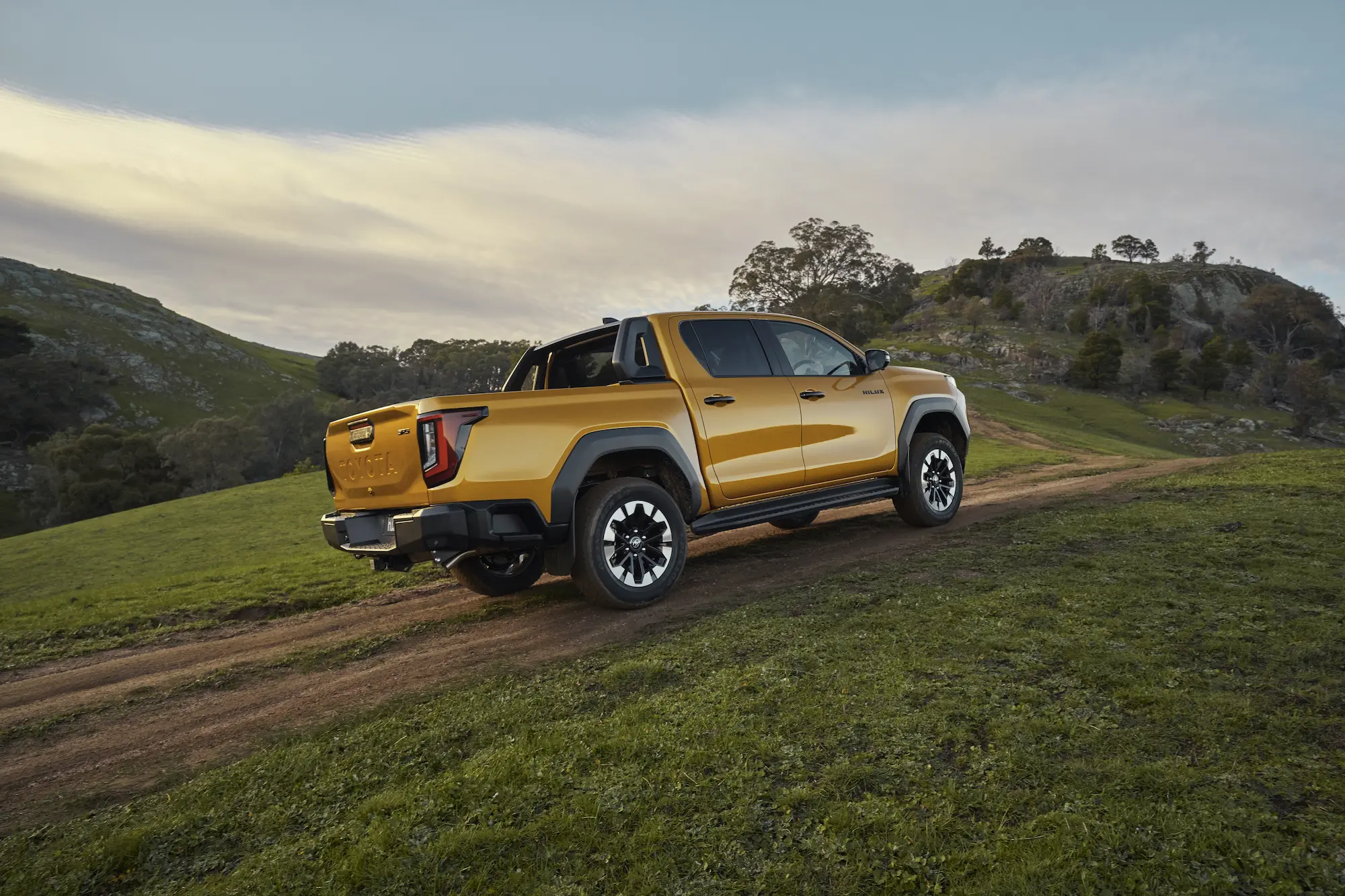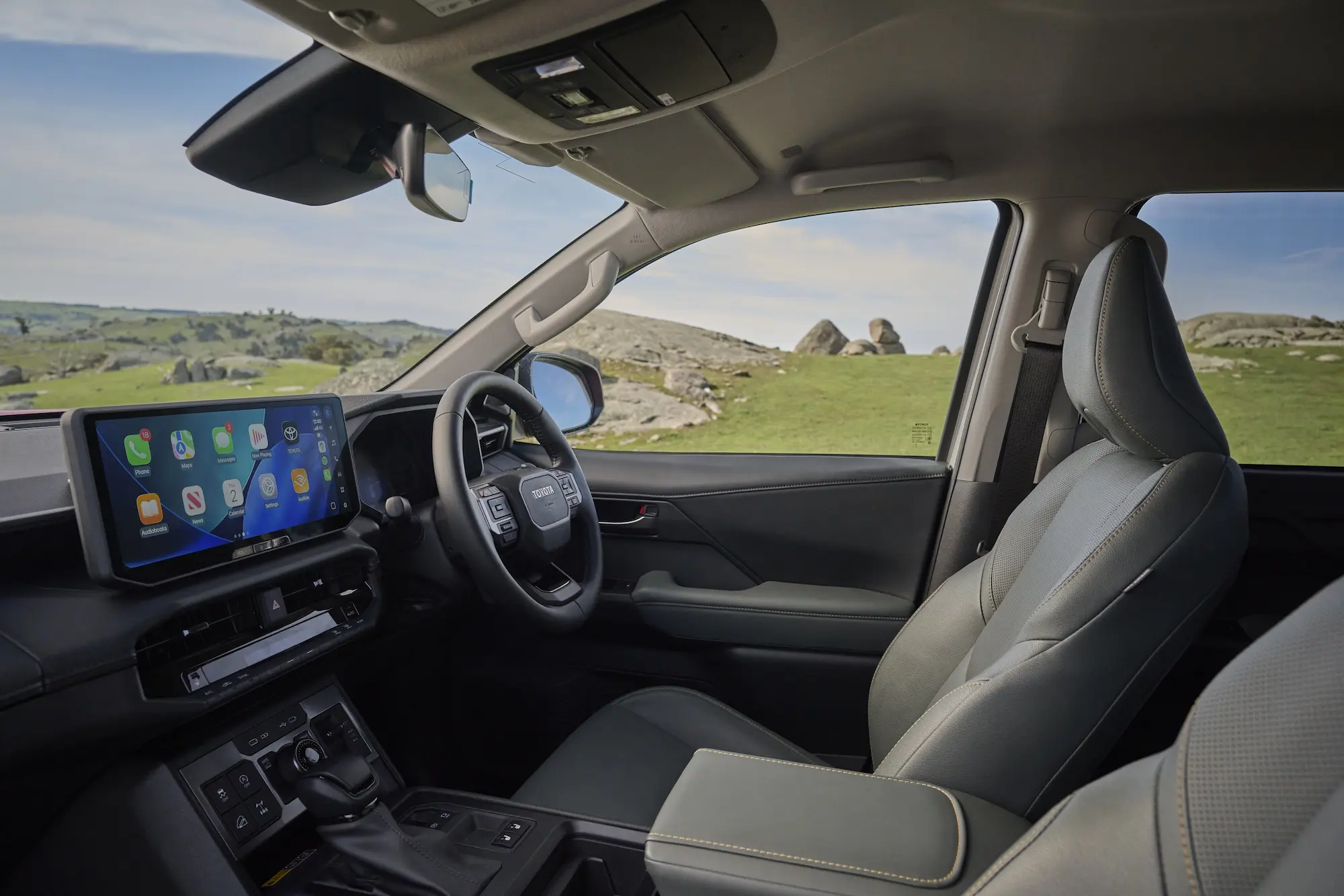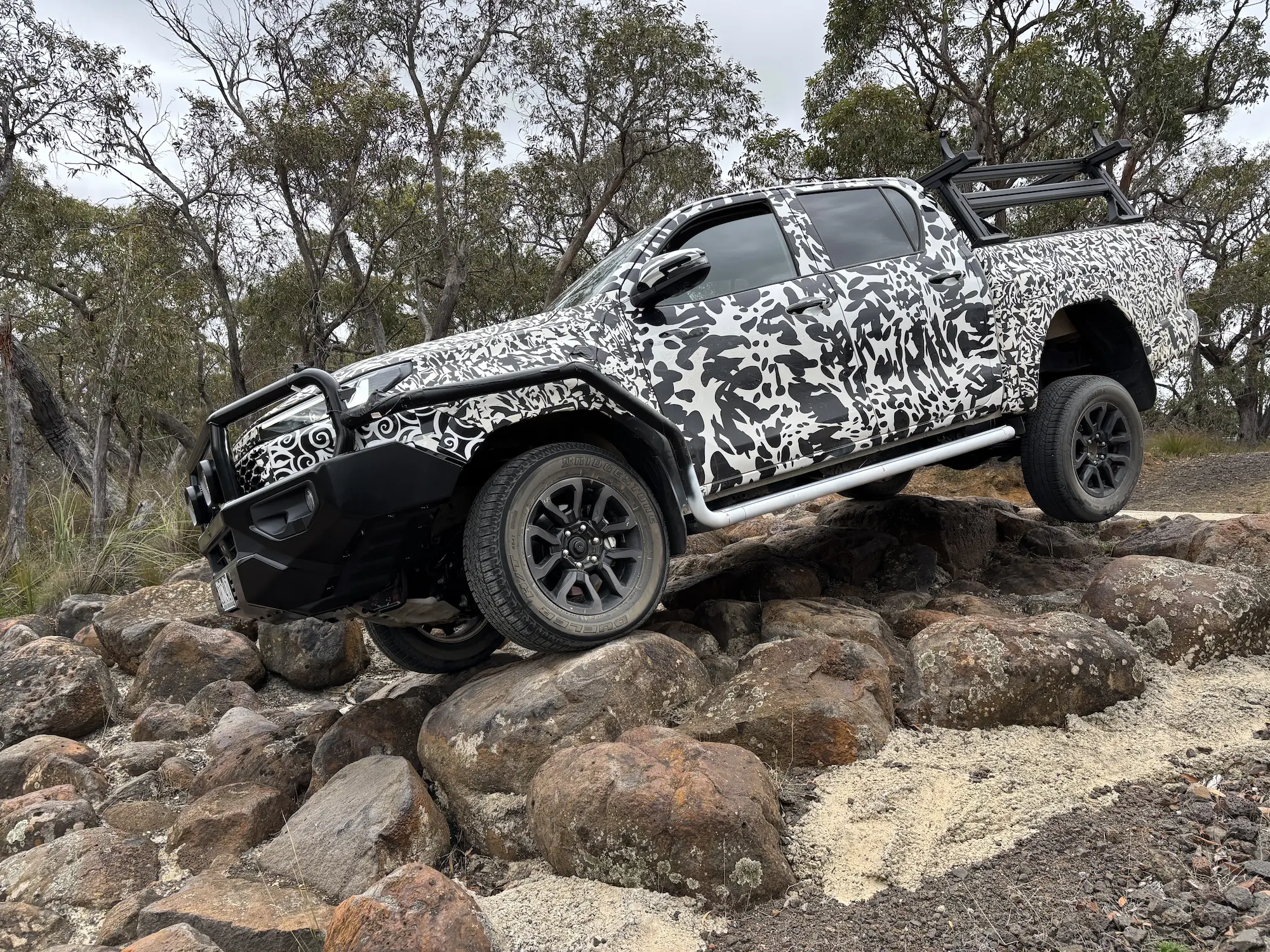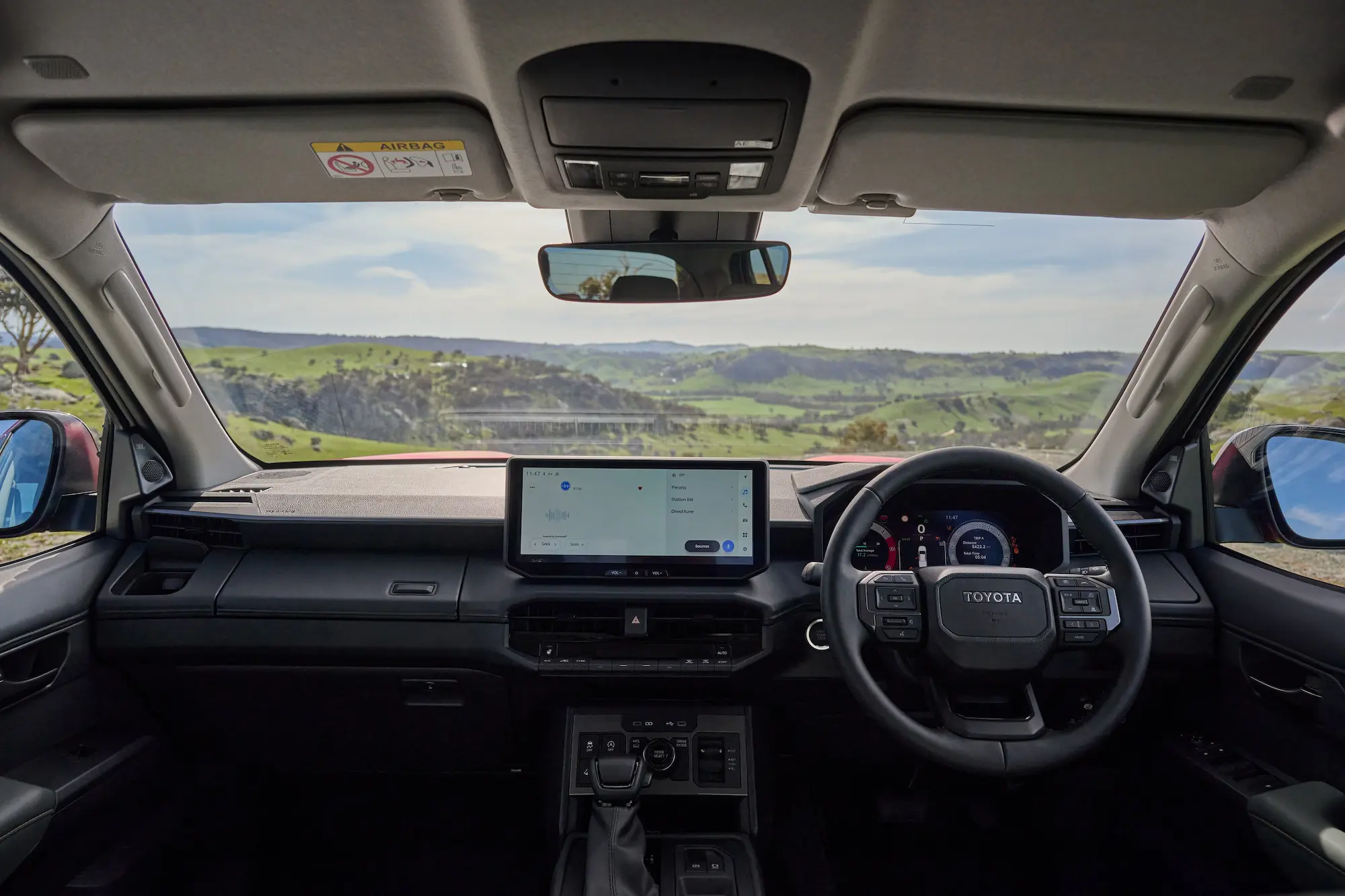Advertisement
Advertisement
Toyota has revealed the ninth-generation HiLux ahead of a December 2025 launch. For the first time in the model’s 68-year history, the iconic ute will be offered with battery-electric power alongside its proven diesel lineup.
The 2026 Toyota HiLux arrives as a comprehensive evolution rather than ground-up redesign. It retains the IMV platform architecture dating back to 2004 but adds electric power steering, revised suspension, upgraded 4WD systems, and a completely overhauled interior.
Perhaps more significantly for Australian buyers, the exterior design was led by Toyota’s Australian design studio in Altona. This makes it genuinely the most Australian HiLux ever developed.
Don’t mistake this for an all-new vehicle. The structure from the windscreen A-pillar to the back of the cab is carried over unchanged from the current model. This includes door skins, roof and window glass. However, the front and rear ends are completely redesigned under a “Cyber Sumo” design theme. The new look features high-set slimline LED headlights, a body-coloured mesh grille, and a chunkier lower bumper.

Higher-spec SR5 and Rogue models gain moulded wheel arch extensions and blacked-out window surrounds. Pickup variants add an integrated step behind the rear wheel for easier tray access. The Ford Ranger has offered this feature since 2022.
The proven 2.8-litre turbo-diesel four-cylinder remains the sole engine at launch. You’ll notice the previous 2.4-litre diesel and 2.7-litre petrol engines have disappeared. Both fell victim to incoming Euro 6 emissions regulations. This is the same compliance requirement that prevented Toyota bringing the new FJ LandCruiser to Australia.
| Specification | Automatic | Manual |
|---|---|---|
| Engine | 2.8L turbo-diesel (1GD-FTV) | 2.8L turbo-diesel (1GD-FTV) |
| Power | 150kW | 150kW |
| Torque | 500Nm | 420Nm |
| Transmission | 6-speed automatic | 6-speed manual |
| 48V mild hybrid | SR and above (automatic only) | Not available |
| Additional boost | 8.5kW/65Nm (mild hybrid) | – |
Fuel consumption, towing capacity and payload figures remain unconfirmed. However, Toyota emphasises the HiLux retains its strong towing performance. The Ford Ranger went automatic-only in 2022. Toyota continues offering both transmissions across 21 different variants spanning single-cab, extra-cab and dual-cab body styles.
The battery-electric HiLux arrives in Q1 2026 (January-March) in dual-cab 4×4 SR and SR5 configurations only. It features dual electric motors – one per axle – paired with a lithium-ion battery. Toyota hasn’t released range, charging or performance specifications yet. The company describes the BEV as primarily aimed at fleet customers looking to reduce emissions.

A hydrogen fuel cell variant follows in 2028. Details remain scarce beyond it being dual-cab 4×4 only.
A GR Sport variant with increased power and torque is expected later to rival the Ford Ranger Raptor. Timing remains unconfirmed.
Electric power steering represents the biggest mechanical change. It improves feel and response while reducing vibrations through the wheel on rough roads. It also enhances the lane-keeping safety systems.
Toyota developed two distinct suspension tunes. WorkMate and SR grades prioritise heavy load carrying and towing. SR5 and above focus on ride comfort for everyday use. Both retain independent coil-sprung front and rigid axle leaf-sprung rear suspension.

All 4×4 grades use a part-time system with high and low range. Automatic SR 4×4 models and above now gain a rear locking differential and Multi-Terrain Select (MTS) as standard. Toyota Australia’s evaluation team extensively tuned the MTS system across local conditions. Automatic dual-cab SR5 and above add Multi-Terrain Monitor. This system uses multiple cameras for obstacle navigation.
The returning Rugged X variant arrives with enhanced off-road capability through standard protection and recovery equipment.
The completely redesigned interior features a new three-tiered dashboard. It sits flatter for improved forward visibility when off-roading. A 12.3-inch touchscreen is standard across every variant with wireless Apple CarPlay and Android Auto. Digital instrument clusters range from 7.0-inch (WorkMate/SR) to 12.3-inch (SR5 and above).

Physical climate controls sit below the touchscreen. These are large buttons and knobs you can operate without looking. The LandCruiser Prado-style squared-off steering wheel improves ergonomics. A chunky gear selector, prominent off-road function buttons, and centre-mounted drive mode dial complete the updated layout.
An electronic park brake replaces the traditional handbrake. However, conventional levers may remain on some variants. The wider centre console improves storage. Newly developed seats offer up to eight-way powered adjustment with lumbar support on higher grades.
The latest Toyota Safety Sense suite comes standard. This includes pre-collision autonomous emergency braking, active cruise control, lane departure alert, lane trace assist, road sign assist and auto high beam. Blind spot monitoring, rear cross traffic alert, safe exit assist and reversing cameras are also standard. Parking sensors feature on pickup models.
The HiLux becomes the first Toyota with cabin detection alert. This system uses radar to detect rear seat passengers and notify occupants when exiting.
The HiLux was Australia’s best-selling vehicle for seven consecutive years. The Ford Ranger knocked it off the top spot in 2023. The new model faces intensifying competition from the Ranger, Isuzu D-Max, Mitsubishi Triton, and newcomers including the BYD Shark 6, Kia Tasman and MG U9.

Toyota Australia’s involvement extended beyond design. The local team conducted two and a half years of real-world testing focusing on suspension and chassis tuning. The brand’s “Genchi” customer research tours since 2010 have been visiting everyone from Park Rangers to mining operators. These tours identified maintaining towing performance and off-road capability while improving ride comfort as key priorities.
Diesel models launch in December 2025 across 21 variants. These span WorkMate, SR, SR5, Rogue and Rugged X grades. BEV variants follow in Q1 2026, with FCEV scheduled for 2028.
Australian pricing and detailed specifications will be announced closer to launch. Toyota Connected Services includes a complimentary one-year period from delivery.